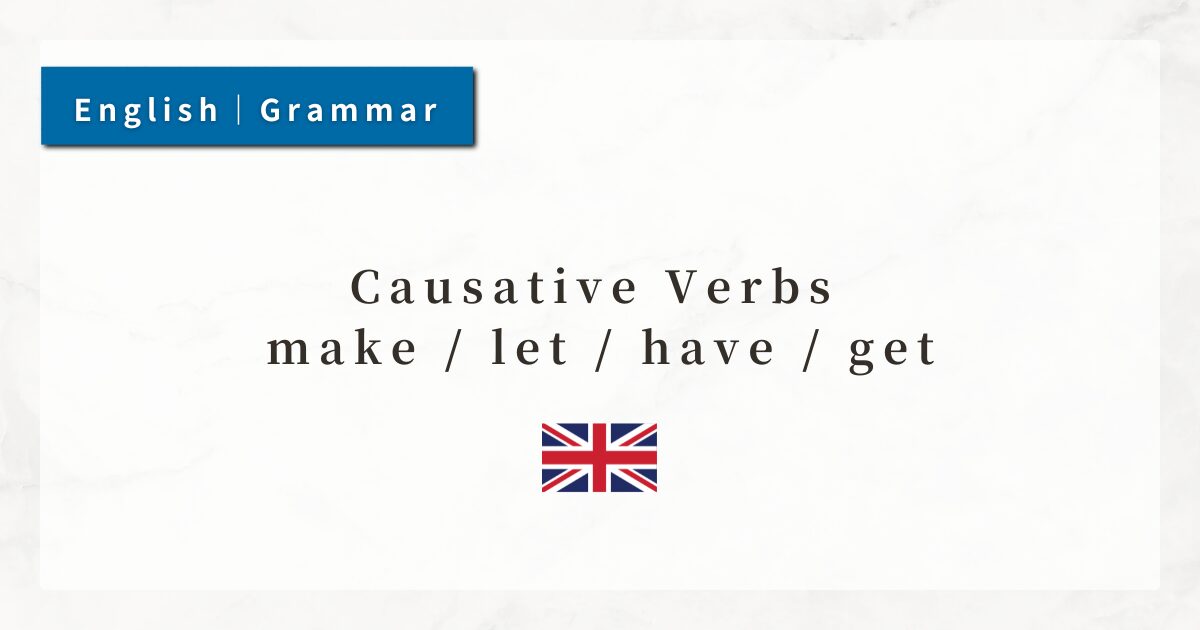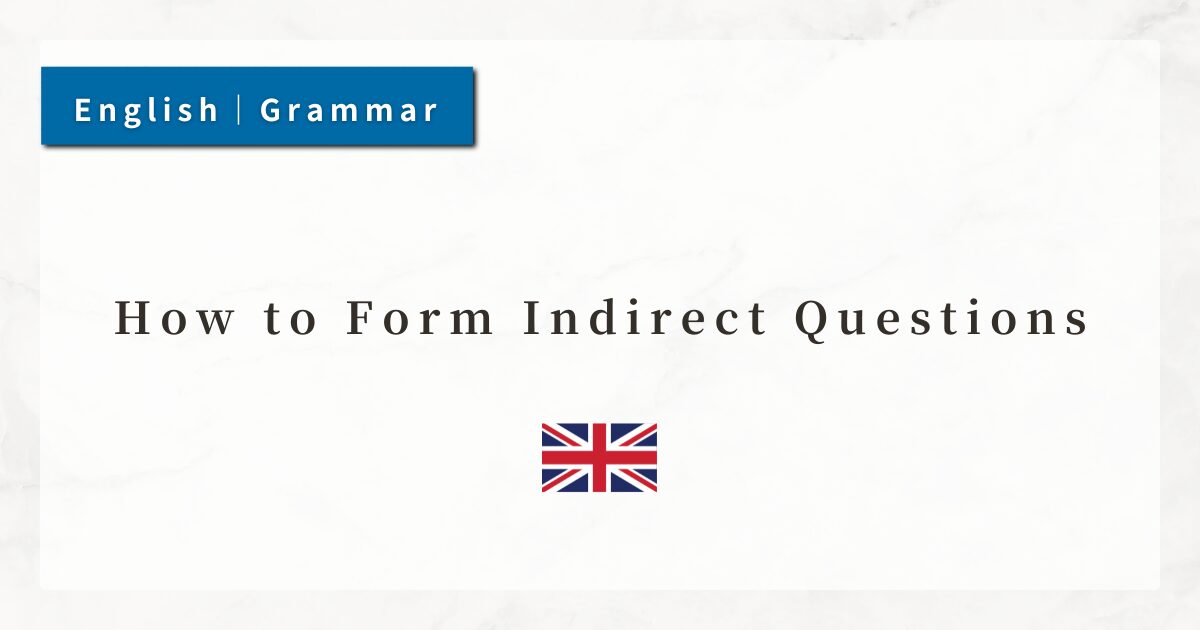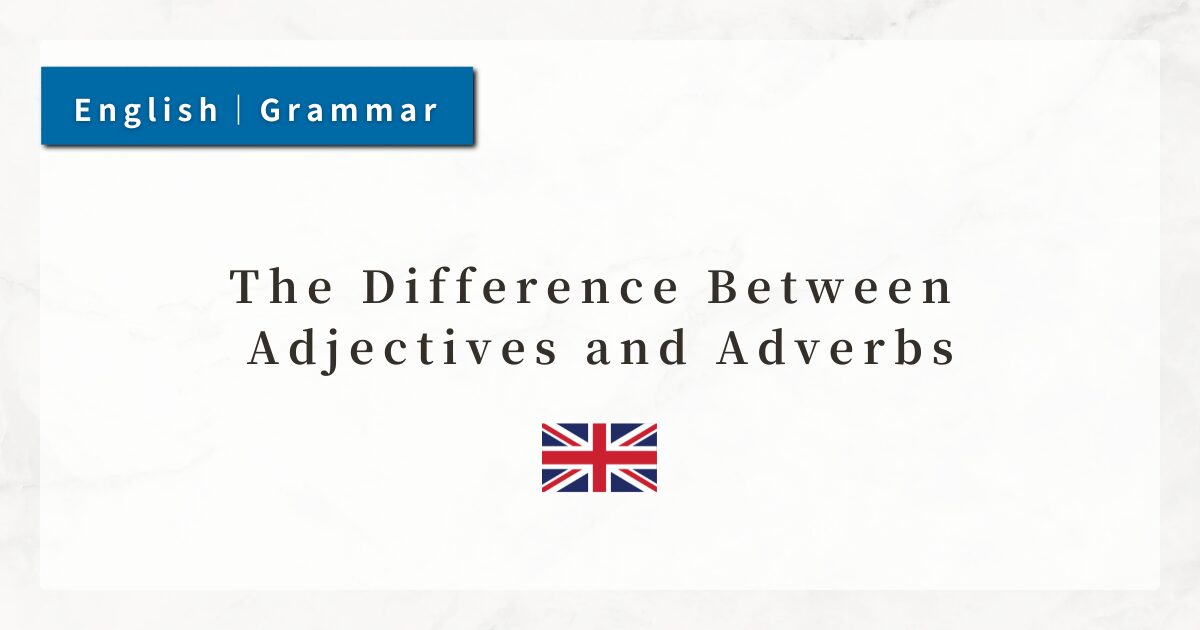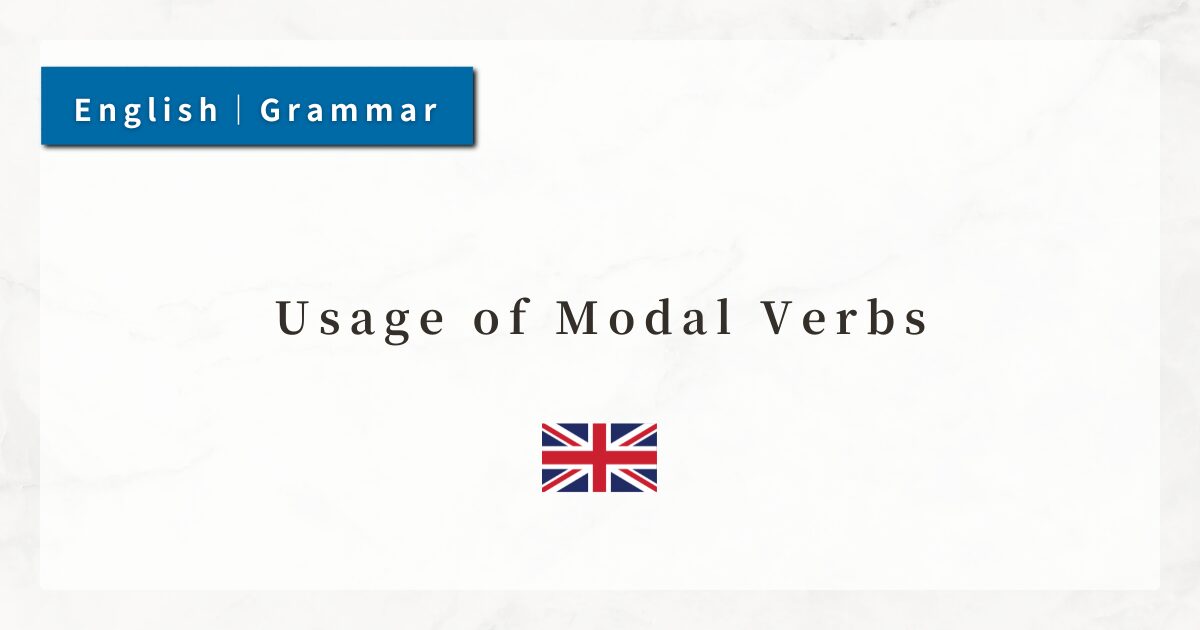#42 Causative Verbs make / let / have / get|Meanings and Usage

In English, when I want to express ideas such as “to make someone do something” or “to have someone do something,” I use causative verbs.
By using causative verbs, I can naturally express the nuance of making another person perform an action, or having an action done for me.
In this lesson, I will explain the basic usage of the representative causative verbs: make, let, have, and get.
1. The Basic Structure of Causative Verbs
Causative verbs generally follow the pattern “person (or thing) + base form of the verb.”
However, in the case of get, the structure is “get + person + to + base form of the verb,” which is a distinctive feature.
| Verb | Basic Structure | Core Meaning |
|---|---|---|
| make | make + person + base verb | To force someone to do something |
| let | let + person + base verb | To allow or permit someone to do something |
| have | have + person + base verb | To naturally cause / ask someone to do something |
| get | get + person + to + base verb | To persuade someone to do something |
2. Make: To Force Someone to Do Something
The structure “make + person + base verb” means “to make someone do something,” often against their will. This verb carries a strong nuance of force, whether by power or by circumstance.
- The teacher made us clean the classroom.
- His words made me cry.
- The movie made me think about my life.
The key point is that make is used even when the person did not want to do the action.
3. Let: To Allow or Permit Someone to Do Something
The structure “let + person + base verb” means “to let someone do something” or “to permit an action.”
Unlike make, the verb let implies giving freedom or permission.
- My parents let me stay up late last night.
- Let him speak.
- Don’t let your phone distract you.
Thus, let carries a softer nuance of “allowing what someone wants to do.”
3. Have: To Cause or Ask Someone to Do Something
The structure “have + person + base verb” is used to mean “to cause someone to do something” or “to have someone do something.”
This does not imply force, but rather a natural situation or a request.
- I had my brother carry the luggage.
- She had her assistant book a hotel.
- We had the mechanic check our car.
There is also a common passive-like usage: “have + thing + past participle,” meaning “to have something done.”
- I had my hair cut yesterday.
This structure is very frequently used in English, so it is important to remember.
5. Get: To Persuade or Manage to Have Someone Do Something
The structure “get + person + to + base verb” means “to persuade or convince someone to do something” or “to manage to have something done.”
Compared with have, get suggests more effort or persuasion.
- I got my friend to drive me to the station.
- He finally got his boss to agree with his idea.
- How can I get my kids to study?
The important points are that get implies persuasion or effort, and it always uses the to-infinitive.
6. Summary
- make: To force someone to do something (make + person + base verb)
- let: To allow someone to do something (let + person + base verb)
- have: To cause or ask someone to do something (have + person + base verb)
- get: To persuade or manage to have someone do something (get + person + to + base verb)




